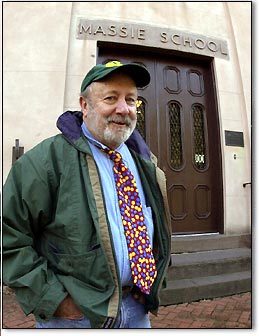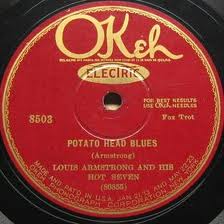Fats Waller, Andy Razaf, and Shelton Brooks wrote this song in 1929 for the revue CONNIE’S HOT CHOCOLATES. I’ve read that Fats sold the rights to this and nearly 20 other songs to Irving Mills for $500 — a fortune in those days, but nothing compared to the money Mills made from that bundle. Alas.
But back to the theme. To some, it’s not the most memorable composition — melody, rhythm, or lyrics — but I love it ardently because of the music its inspired, and because I always imagine a line of nimble chorus girls dancing to it. Like many of Fats’ most memorable tunes, it relies greatly on repeated melodic phrases moved around over the harmonies — simple to annotate but not as simple to create.
Here are four recordings from 1929, in chronological order, and a later masterpiece. Consider the delightful possibilities.
The first ever: Louis Armstrong And His Orchestra: Louis Armstrong, trumpet, vocal; Homer Hobson, trumpet; Fred Robinson, trombone; Jimmy Strong, clarinet; Bert Curry, Crawford Wethington, alto saxophone; Carroll Dickerson, violin, conductor; Gene Anderson, piano; Mancy Carr, banjo; Pete Briggs, tuba; Zutty Singleton, drums. New York, July 22, 1929. (I think the intuitive relationship between Louis and Zutty — the latter on bock-a-de-bock cymbals and solidly thudding accents) foreshadows that of Louis and Big Sid. July 22, 1929:
Irving Mills’ Hotsy Totsy Gang. Mannie Klein, Phil Napoleon, trumpet; Miff Mole, trombone; possibly Arnold Brilhart, clarinet, alto; Larry Binyon, tenor saxophone; possibly Arthur Schutt, piano; unknown banjo, guitar; Joe Tarto, tuba; Chauncey Morehouse, drums; Lilian Morton, vocal. July 31, 1929:
I wonder what else can be known about Lilian Morton, aside from the two sides she made for Parlophone, THAT’S MY MAMMY and AFTER MY LAUGHTER CAME TEARS (accompaniment unknown) and that in 1926, she was praised in a tiny notice in The Scranton Republican from Scranton, Pennsylvania, as “Broadway’s well known singing comedienne … a peppery singer of the original type,” with “a splendid voice.” She sounds very good on this recording.
Here’s the non-vocal version (made for the European market) with Miss Morton’s place taken by a duet for Arthur Schutt (perhaps?) and wonderful drumming by Chauncey Morehouse. Praise to Larry Binyon, too:
And for the Lilian Morton completists in the viewing audience, the other Fats song — a good one! — from the same score, with Miss Morton’s vocal:
The originator, Fats Waller, at the piano, August 2, 1929:
And an utterly remarkable recording of SUE by Fess Williams and his Royal Flush Orchestra, September 20, 1929. The Louis and Mills recordings seem to use the same stock arrangement, but this recording is notable for a slap-tongue clarinet solo after the last eight bars, completely satisfying vaudeville singing from the leader, wondrous piano by Hank Duncan, and delightful trumpet work from either Temple or Brown. Fess Williams, clarinet, alto, vocal, leader; George Temple, trumpet; John Brown, trumpet, vocal; David “Jelly” James, trombone; Ralph Brown, Felix Gregory, alto saxophone; Perry Smith, clarinet, tenor, vocal; Henry “Hank” Duncan, piano; Ollie Blackwell or Andy Pendleton, banjo; Emanuel Casamore, tuba; Ralph Bedell, drums, vocal:
and one of the most endearing recordings I know — in its own way evoking Louis and Fats together in the persons of Ruby Braff, cornet; Dick Hyman, piano; July 2, 1994:
May your happiness increase!



